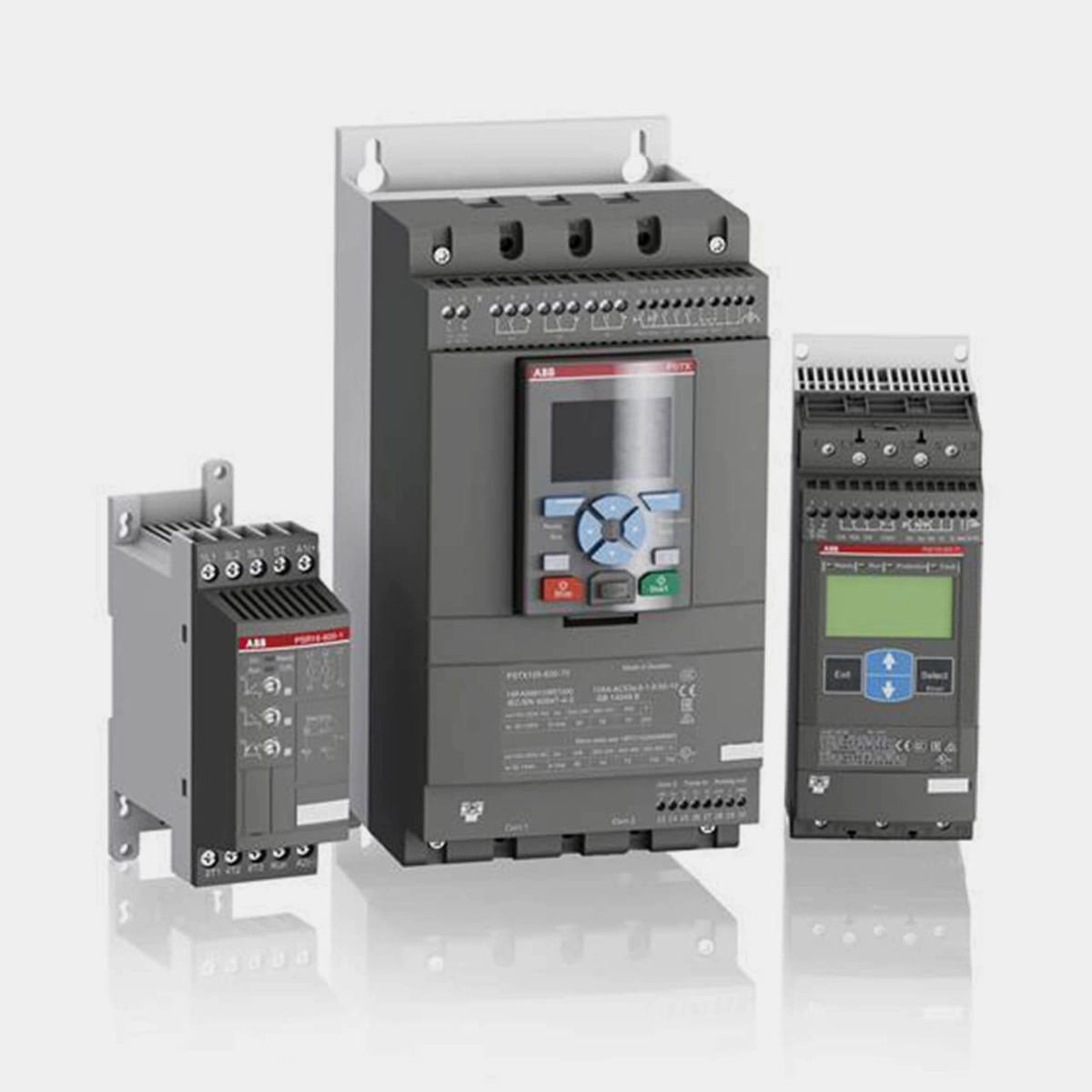
What is the Difference between VFD and Soft Starter?
VFDs and soft starters serve different purposes in motor control applications, and choosing the right motor control device should depend on factors such as application needs, motor requirements, and more.
VFD (Variable Frequency Drive) and Soft Starter are two commonly used motor control devices that serve different purposes in industrial applications. Understanding the differences between these two devices is crucial when selecting the appropriate control method for a specific motor-driven system. In this article, we will explore the key differences between VFDs and Soft Starters, including their working principles, control capabilities, energy efficiency, motor protection features, and applications. By understanding these distinctions, you will be able to make informed decisions when choosing the most suitable motor control solution for your specific needs.
I. Working Principles
VFD
A VFD, also known as an AC drive or inverter, controls the speed and torque of an AC (Alternating Current) motor by adjusting the frequency and voltage supplied to the motor. It converts the input AC power into DC power, and then inverts it back to AC power with variable frequency and voltage. By varying the frequency and voltage, a VFD enables precise control over motor speed, allowing for smooth acceleration, deceleration, and speed regulation.
Soft Starter
A Soft Starter is a device designed to reduce the startup current and voltage applied to an AC motor during motor startup. It typically uses solid-state electronics to temporarily limit the voltage and current provided to the motor. The Soft Starter gradually increases the voltage and torque applied to the motor, ensuring a smooth and controlled startup. Once the motor reaches its rated speed, the Soft Starter is bypassed, and the motor operates at full voltage.

II. Control Capabilities
VFDs
VFDs offer a wide range of control capabilities, allowing for precise speed control, torque regulation, and acceleration/deceleration profiles. They provide the ability to adjust motor speed according to the specific requirements of the application. VFDs can also offer advanced features such as programmable logic control (PLC) integration, PID (Proportional-Integral-Derivative) control loops, and communication interfaces for remote monitoring and control.
Soft Starters
Soft Starters primarily focus on controlling the motor during startup. They provide a controlled acceleration ramp, limiting the inrush current and reducing mechanical stress on the motor and connected equipment. However, Soft Starters do not offer the same level of speed control and dynamic performance as VFDs. Once the motor reaches its rated speed, the Soft Starter is bypassed, and the motor operates at a fixed speed determined by the power supply frequency.
III. Energy Efficiency
VFDs
VFDs offer energy-saving benefits by allowing motor speed regulation. By adjusting the motor speed to match the load requirements, VFDs can significantly reduce energy consumption compared to running the motor at full speed constantly. This ability to match motor speed to the load is particularly beneficial in applications with varying load demands, such as pumps, fans, and compressors.
Soft Starters
Soft Starters primarily focus on providing a controlled startup and do not offer energy-saving capabilities. Once the motor reaches its rated speed, the Soft Starter is bypassed, and the motor operates at full voltage. Therefore, Soft Starters do not provide the same energy efficiency benefits as VFDs.
IV. Motor Protection Features
VFDs
VFDs offer comprehensive motor protection features. They can monitor motor parameters such as current, voltage, temperature, and speed. VFDs provide overload protection, motor stall detection, phase loss protection, and short circuit protection. With these built-in protection features, VFDs enhance motor longevity and prevent damage due to abnormal operating conditions.
Soft Starters
Soft Starters offer basic motor protection features but not to the same extent as VFDs. They typically provide overload protection, phase loss protection, and sometimes thermal protection. However, Soft Starters do not offer advanced protection features such as stall detection or comprehensive real-time monitoring of motor parameters.
V. Applications
VFDs
VFDs are widely used in applications that require precise speed control, such as pumps, fans, compressors, conveyors, and machine tools. They find applications in industries such as HVAC (Heating, Ventilation, and Air Conditioning), water treatment, manufacturing, and process automation. VFDs are particularly beneficial in systems with varying load demands, where energy savings and enhanced control capabilities are important.
Soft Starters
Soft Starters are commonly used in applications where a controlled startup is required to reduce mechanical stress on the motor and connected equipment. They are suitable for applications such as large motors, pumps, and compressors, where the initial startup current can be high, potentially causing voltage dips or other power quality issues. Soft Starters are often employed in industries such as water treatment, oil and gas, and mining.
Conclusion
VFDs and Soft Starters are motor control devices that serve different purposes in industrial applications. VFDs offer precise control over motor speed, torque, and acceleration, providing energy savings and advanced control capabilities.On the other hand, Soft Starters focus on controlled motor startup, reducing inrush current and mechanical stress during the initial stages. While Soft Starters do not offer the same level of speed control and dynamic performance as VFDs, they are effective in applications where a smooth and controlled startup is crucial. When choosing between a VFD and a Soft Starter, consider factors such as the specific motor control requirements, energy efficiency goals, and the nature of the application. If precise speed control, energy savings, and advanced motor protection features are essential, a VFD would be the preferred choice. Conversely, if the main concern is reducing startup current and minimizing mechanical stress, a Soft Starter would be suitable.



Leave a Comment